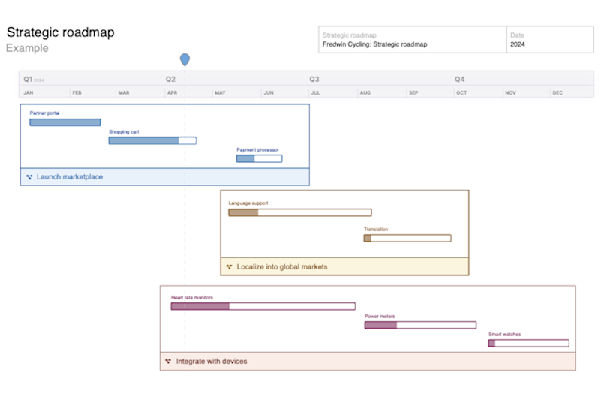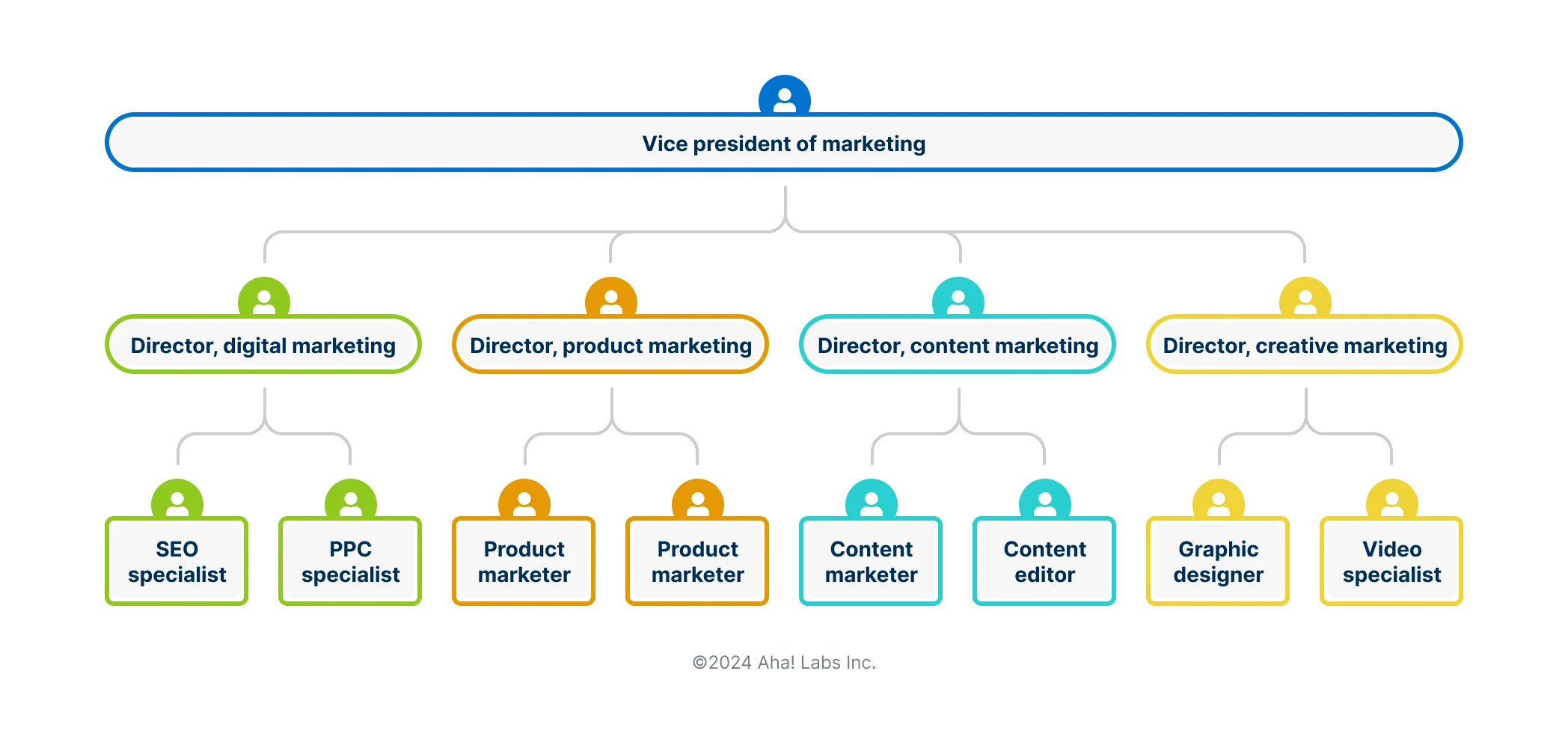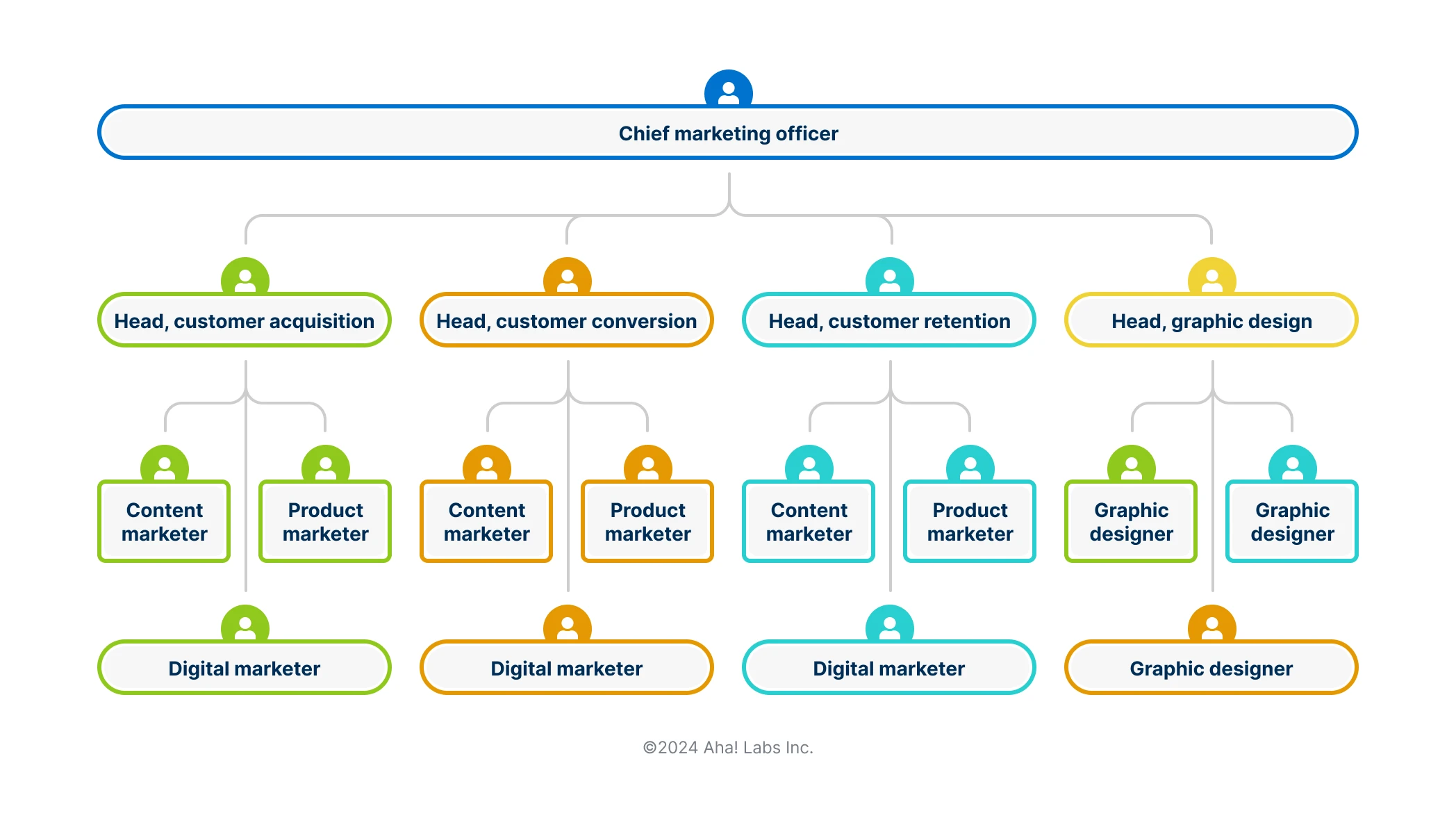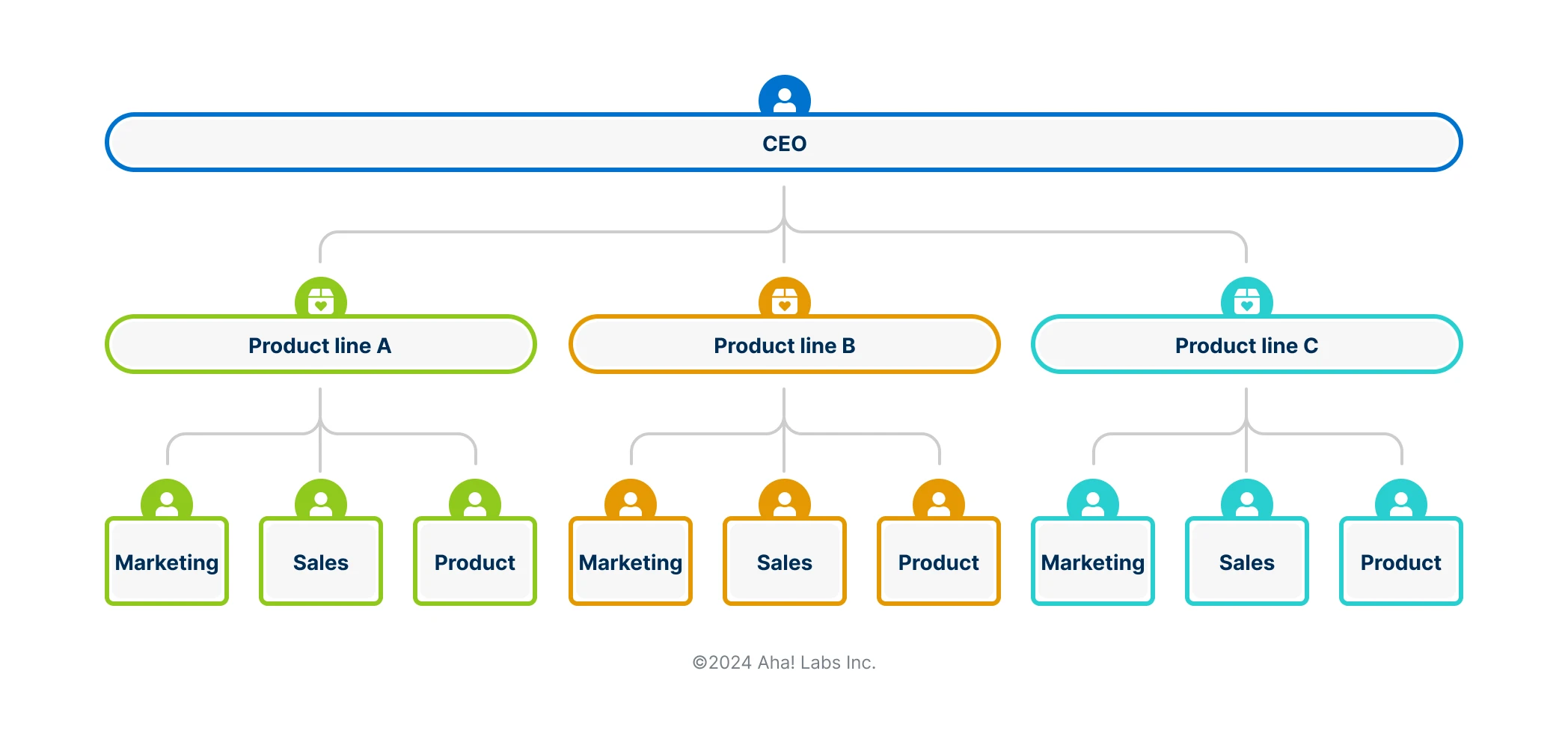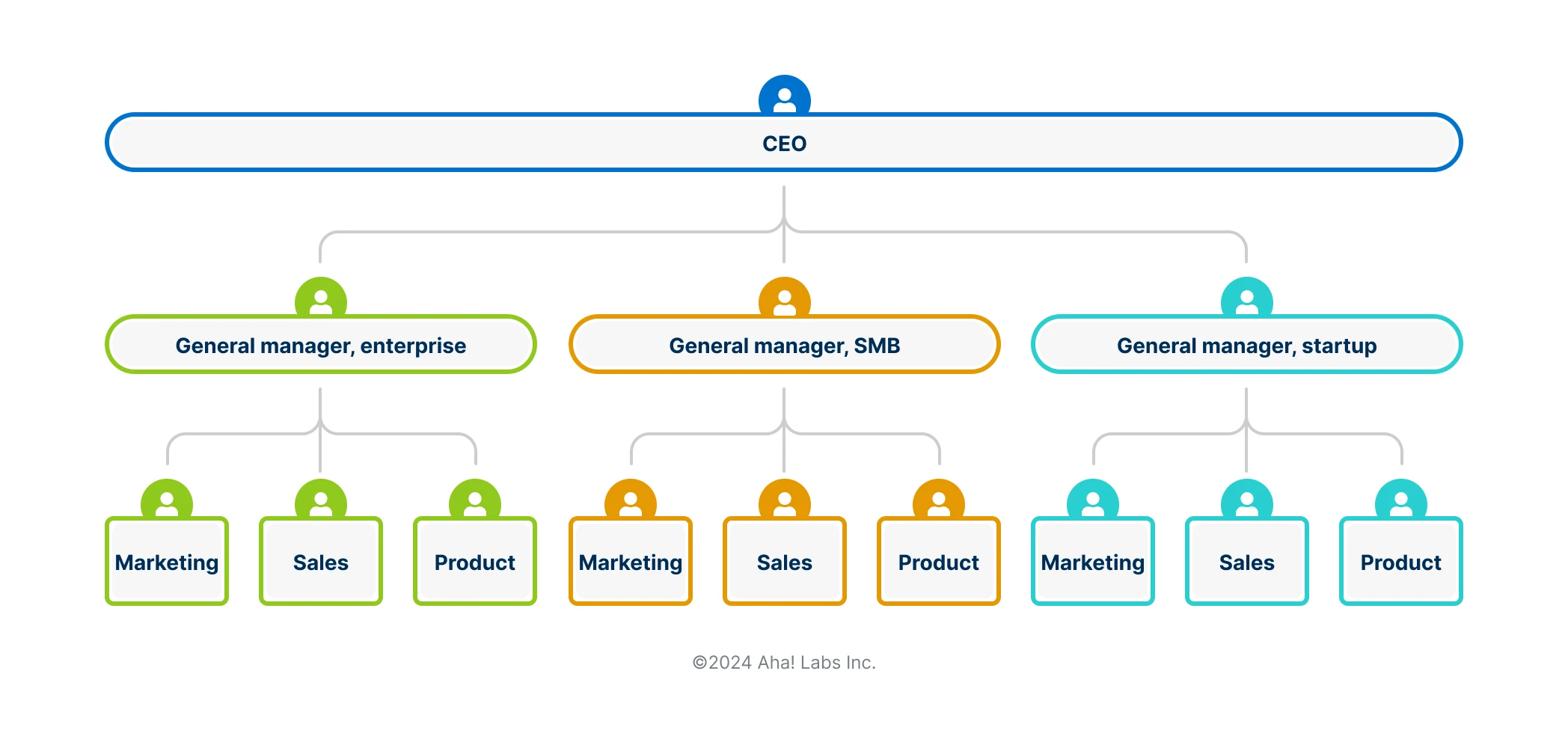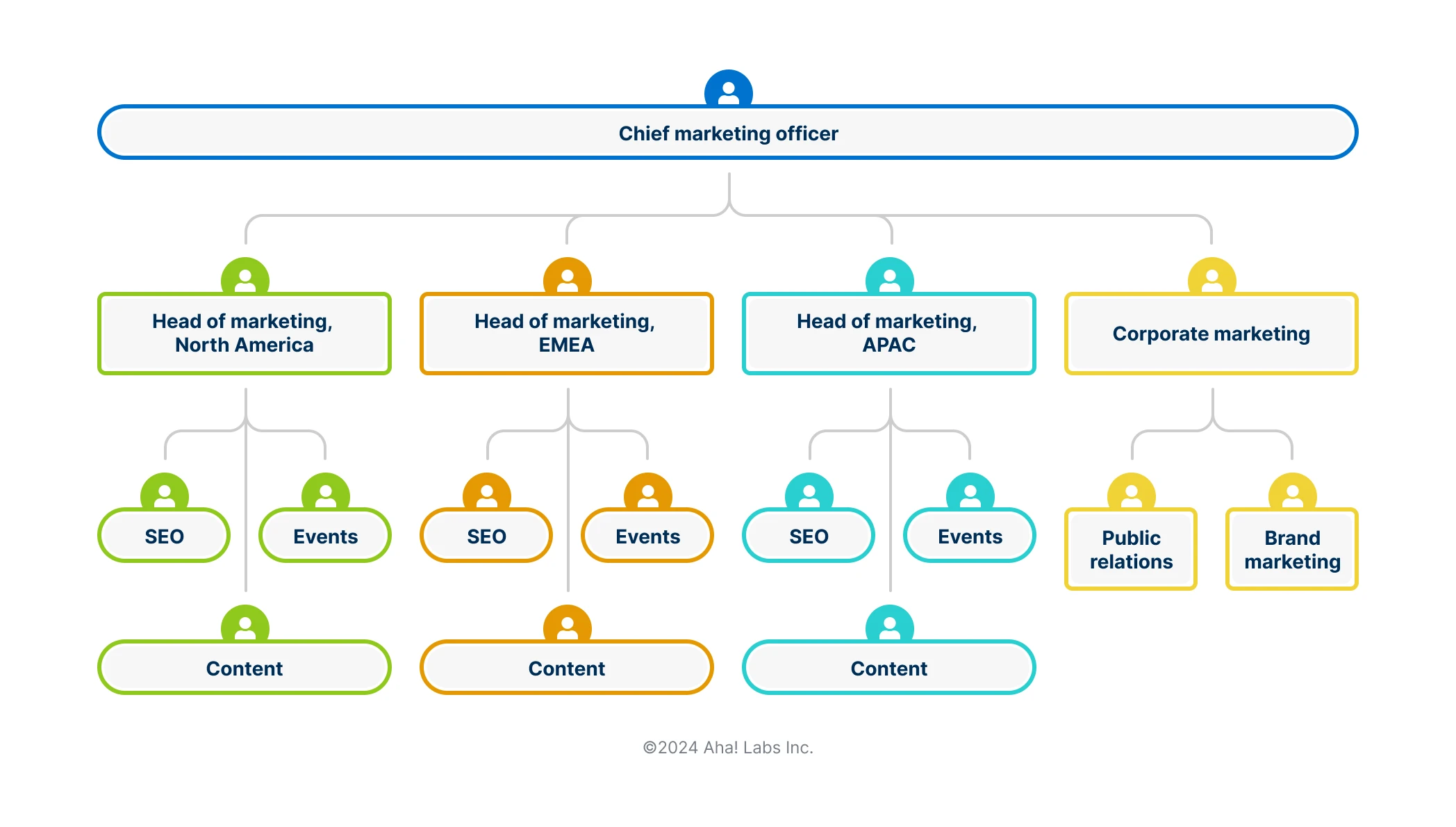What are common marketing organization structures?
Last updated: February 2025
Marketing success depends on three ingredients. You need a breakthrough strategy, a strong plan, and a brilliant team. How you choose to structure the marketing team can significantly impact your ability to achieve your goals. You also need to establish clear roles and responsibilities, enabling teams to collaborate to deliver great results.
Some common ways that companies organize marketing are by:
Function: Group teammates by their specific marketing disciplines.
Division: Align marketers around specific product divisions, customer segments, or geographic areas.
Customer stage: Set up teams around stages of the customer journey — such as acquisition, conversion, and retention.
Each of these structures should be designed to support a specific business need, such as customer conversion or product specialization. Of course, every company is unique. It is important to build a structure that best supports the needs of your organization.
Supercharge collaboration with Aha! Roadmaps. Sign up for a free trial now.
Explore this guide to learn about the different marketing organization structures. Jump ahead using these links:
Why does marketing organization structure matter?
As a whole, the marketing department is responsible for the same core marketing functions — such as digital, content, social media, and product marketing.
But marketing involves a lot of nuance across these different disciplines. You want to create a marketing organization structure that will foster strong collaboration across the department. Thoughtfully choosing how to structure marketing and distribute responsibilities leads to benefits like well-defined workflows and smoother project hand-offs.
Ultimately, the goal is to design your marketing organization structure in a way that supports efficient decision-making and streamlines marketing operations — so everyone can do their best work.
What are questions to consider as you determine marketing structure?
Here are some key questions to consider as you think about the best way to organize your marketing team:
What goals are you accountable for achieving?
What are the key functions of your marketing team?
How does your marketing team support the broader organization?
Are there multiple products or product lines? Will that change in the future?
Is your team spread out across multiple locations?
Who are your target customers? How do their needs vary?
Structure marketing by function
One of the most common ways to structure a marketing team is by function. Employees are organized according to their specific skills and the duties they perform. Each function is typically managed independently, with functional leads reporting directly to a VP of Marketing or the Chief Marketing Officer. In the example below, you see four key functions of marketing — digital marketing, product marketing, content marketing, and creative marketing — as well as key roles within each sub-team.
This structure scales easily as the size of the team grows. Individuals with similar skills are grouped together, which encourages specialization. Using this structure creates consistency across the same type of work. Teams are able to work independently and perform functional work quickly without needing involvement from other teams. With this approach, it is important to make sure that the functional teams collaborate closely with each other to support overall marketing goals. The potential downside is that silos can occur and marketing activities are not aligned.
Structure marketing by customer stage
Some companies build their marketing teams around the stages of the customer journey — such as acquisition, conversion, and retention. Each team owns specific metrics for that funnel stage and reports to the CMO on overall progress. Some teams, like creative design, could still be centralized but they would support the individual stages.
The best way to read the example below is from left to right. Customer conversion cannot happen until the customer finds the company, for example. Similarly, customers cannot be retained until they actually convert. This design allows each team to stay focused on the goals they are responsible for, ensuring that each area of the funnel is optimized.
Within a structure like this, each group includes all of the skills necessary to deliver marketing activities for a specific stage of the customer journey. Teams using this model need to work closely to ensure a seamless experience for their customers. This collaboration creates a funnel that is optimized at every stage.
Structure marketing by division
Divisional organizational structures are common at large enterprises. Divisions can be based on product lines, geographies, or customer segments. Each division operates autonomously within the larger organization. These are key revenue streams so the structure of the entire company is organized for driving growth. Each division has control over their own resources — including dedicated marketing, sales, and product management teams.
While this autonomy enables teams to move quickly, divisional org structures can create operational inefficiencies. For example, paid search professionals in one division not communicating with those in other divisions could result in both of them bidding on similar keywords — thus competing directly with each other.
Here are three ways you can organize a company around divisions, showing how marketing fits into each:
Product divisions
Organizing teams around product offerings is common at large enterprises, especially if there are multiple product lines. Functions such as corporate marketing would be centralized and would provide each product line with brand marketing and communications support as needed.
Customer segment
Many organizations focus on different customer segments — such as industry, market, or size. Some companies use these segments to guide their organizational structure. By focusing on specific customer segments, product teams can focus on customizing the platform and marketers can craft messages that deeply resonate with different customer groups, enabling sales to be more effective. The example below shows teams organized by the size of the customer they are trying to attract, convert, and retain.
Geographical divisions
Enterprise organizations often operate in multiple countries and languages. Structuring teams by territories, districts, or regions can be particularly useful. Geographies are often large areas — even entire continents — like the example detailed below. Geographical teams are able to optimize and localize marketing tactics for a specific audience. This gives local teams more autonomy so they can move quickly and create marketing programs that resonate with their region. Similar to the product division example above, there would be a central corporate marketing team that would support the field marketing teams.
Collaboration, communication, and alignment are necessary regardless of the org structure. The key to avoiding confusion or working at cross-purposes is an integrated marketing roadmap. A unified view helps marketing teams produce consistent work. This keeps everyone informed of cross-team work, reach marketing, and business goals. Many teams use purpose-built marketing software to define a long-term strategy, build visual roadmaps, and keep the team on track.
Connecting teams to your marketing strategy
A marketing organization's structure is only as good as the workflows and processes that support it. Without a clear marketing strategy and roadmap, teams will not know what they are working towards. It keeps teams in sync and focused on what matters most.
Today, many teams rely on purpose-built marketing software to define their strategy, set their goals, and establish a comprehensive marketing roadmap. A good marketing roadmap connects the organization's goals down to the tactical work each team plans to do.


